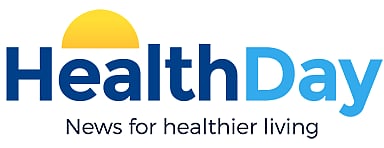SUNDAY, Aug. 5, 2001 (HealthDayNews) -- Medical students at the University of Arizona are getting some thoroughbred guidance on bedside manners.
And it's not from Emily Post. For two hours every Friday afternoon, the College of Medicine students work with horses at a ranch near Tucson.
By seeing how their body language can affect the horses, the students will learn how to better communicate with their patients and put them at ease, says course instructor Dr. Allan J. Hamilton, a Harvard-trained neurosurgeon and head of the University of Arizona's department of surgery.
"Horses are unique in that they are gigantic amplifiers for body language," Hamilton says.
For example, the students use their posture, stance, eye contact and other types of gestures to train the horses without touching them.
Horses are so sensitive they can be controlled with just a look, Hamilton says.
"All my students now know how to do it. So they can just look at a part of a horse and put visual pressure on that part of a horse and watch the horse move away," he says.
Good horsemanship requires an understanding of your own body language and energy levels. Working with horses helps the medical students learn patience, gentleness and a way to relate physically to patients in a nonverbal and effective manner, Hamilton adds.
"Since horses only can communicate through body language, we spend a lot of time checking our own body language, which is typically kind of predator-related. Very direct, very straightforward," he says.
Unintentionally aggressive body language can intimidate and upset patients. The medical students who have worked with the horses understand that, he says.
"One of the things we found was that the students became a lot more sensitive about how they came into a patient's space. They became a lot more respectful. The students got into the habit of stopping at the threshold of the room and asking permission to come in," Hamilton says.
As students progress through the course, they're given increasingly challenging tasks, such as making a riderless horse leap a hurdle on its own. And they work with different horses because, like patients, horses vary in temperament and sensitivity.
Interspersed with the horse-training exercises are sessions with patients. These are videotaped and the students critique each other on their use of body language with patients.
This is the first year for this elective course, which Hamilton says was an outgrowth of his horse-training hobby.
"I began to notice that I was changing some of the things I did as a result of the horsemanship training," he says. "I began to become much, much more aware of where I was in the room with the patient, whether I was hooked up with the patient. I just found a number of parallels between the horsemanship and what I was doing with the patient in the exam room."
Jennifer Slack, a first-year medical student taking the course, says it has "made me pay a lot more attention to what I'm doing with my body as well as what I'm saying to a patient when I'm talking to them."
"Horses are so responsive to your nonverbal cues that you can really overdo it. You learn the subtleties, that small movements can really have a big impact," she says.
Slack was skeptical at first because she couldn't imagine how Hamilton was going to link horsemanship skills to patient care. But she's now convinced the course will make her a better doctor.
"It's really made me pay attention to what I'm doing," Slack says.
What to Do: To learn more about patient-doctor communication tips, click here.

